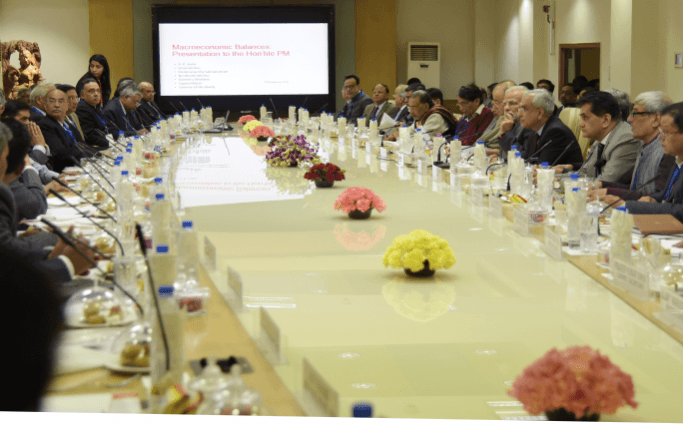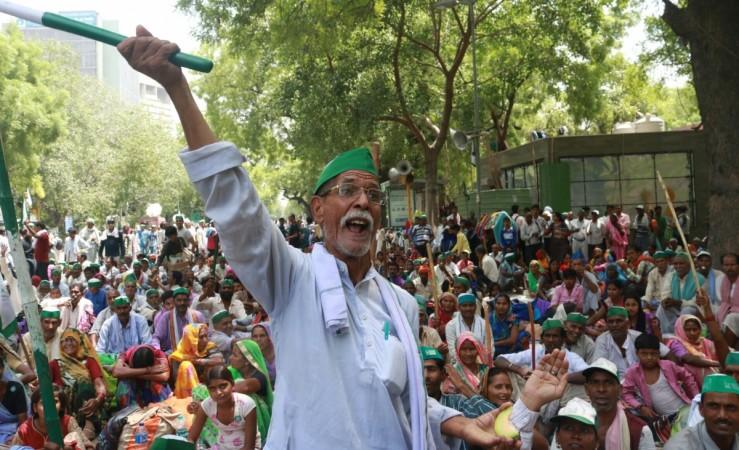
Finance minister Arun Jaitley may on Thursday, February 1, announce big-ticket schemes and populist changes, but beneath each and every move will work calculations to keep Modi in power at least till 2024.
And what about 2024 and beyond? Expect Union Budget 2018 and those in the next few years to pave the way for policies that will let the BJP's prime ministerial candidate after Narendra Modi continue without much backlash.
Interestingly, one common refrain at the grassroots of the party seems to be "2024 tak Modi, uske baad yogi [Modi till 2024, Yogi after that]." This is Yogi Adityanath, the current chief minister of Uttar Pradesh – the state that has sent the most number of prime ministers to office.
Modi himself is a Lok Sabha member from Varanasi in Uttar Pradesh, and the common political understanding is whoever rules UP also rules India. Thus, it won't be surprising if the BJP chooses Adityanath as Modi's successor, and budgets henceforth have a little extra to keep UP happy with the saffron party.
This is also the BJP-led NDA government's last full budget before the next Lok Sabha elections, and many other political calculations seem to be casting a shadow on it.
For one, Modi may decide to call for the Lok Sabha elections to be held this year itself. Second, he may take the combined-election route — simultaneous Lok Sabha and state Assembly elections — to beat the anti-incumbency factor in some states.
More importantly, he may take some steps to chip away at the poll planks that political rivals might use.
Here's a breakdown of how each factor may influence Budget 2018:
![In picture: EVMs used in the first phase of Gujarat Assembly polls being stored in a strong room in Surat, Gujarat on Dec 10, 2017. [Representational image] Electronic Voting Machines](https://data1.ibtimes.co.in/en/full/678415/electronic-voting-machines.jpg?h=450&l=50&t=40)
Central and state-wise issues
India is going to see Assembly elections in four major states in 2018: Karnataka, Rajasthan, Madhya Pradesh and Chhattisgarh. The North-Eastern states of Tripura, Mizoram, Meghalaya and Nagaland are also due for elections this year.
However, since none of the North-Eastern states has much of a Congress presence, and the BJP rules all the aforementioned major states barring Karnataka, the South Indian state will be the one the BJP will focus on. And thus, the Union Budget 2018 can be expected to have some sops and development projects for the state.
As for Rajasthan, Madhya Pradesh and Chhattisgarh, the BJP will be fighting the anti-incumbency factor there, besides several regional issues.
In Madhya Pradesh, for example, the BJP will look to mollify farmers who have protested from time to time. In Rajasthan, on the other hand, it might have to do something for people who have been affected by the actions of cow-protection vigilantes.
But the saffron party may have another ace up its sleeve to counter anti-incumbency.

Possibility of combined and early elections
Of course, the BJP will have an eye on the 2019 Lok Sabha elections, and tweak Budget 2018 accordingly. However, there is now buzz that Prime Minister Narendra Modi may call for simultaneous state and Lok Sabha elections.
Combined state and Central elections are nothing new in India. That is how they happened in the first couple of decades or so since Independence.
And then, Rajesh Jain – the man behind the saffron party's Mission 272 in the 2014 Lok Sabha elections – wrote in an article in the Quint on January 23 that the BJP might call for general elections "in the next 100 days."
If this happens, along with the combining of polls, Andhra Pradesh and Telangana may also see polling along with the Lok Sabha elections and the eight aforementioned states.
With elections combined, voters may not want to choose candidates from two different parties in the Assembly and Lok Sabha polls — something the BJP will count on to help it beat the anti-incumbency factor in the states.
To that end, the BJP may make Union Budget 2018 much more broad-based, so people prefer it at the Centre, and by extension in their states.
For example, the North-East may receive special focus in the form of some infrastructure and defence projects, but the garb this focus will wear is the defence against China, which the whole country may throw its weight behind.
Then there is the Pradhan Mantri Sahaj Bijli Har Ghar Yojana, aka the Saubhagya scheme, launched last year with an aim to bringing electricity to all rural areas across the country. Mint has quoted sources telling it that the scheme will find a mention in the Budget, which means the BJP will have ammunition to needle the "dark era" of successive Congress governments in India.
Encroaching on Opposition agenda
The BJP is also looking to take away the caste-based or region-based agenda that several regional parties with national-level ambitions have built their voter-base on.
The saffron brigade was out in full strength looking to win Dalit support when Mani Shankar Aiyar called Modi a "neech kism ka aadmi," and the Shiv Sena – which has said it will is parting ways with the BJP for the Lok Sabha elections – will have to deal with the saffron party taking credit for the massive Shivaji statue coming up in Mumbai.
The BJP is expected to continue this "encroachment" with Union Budget 2018. It has already started with the Congress' plank of empowering women, with Chief Economic Advisor Arvind Subramanian saying: "In our bid to further the cause of women's empowerment, the cover of Economic Survey 2018 is pink."

Another political move Jaitley might choose to make is bringing back wealth tax and inheritance tax. This should help the BJP firm up its pro-poor image, something it can once again use to hit back at the Congress.














